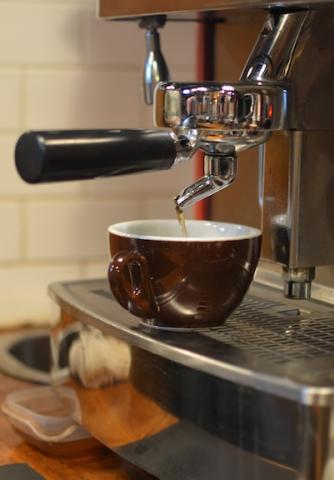![]()
It is said that around 4,700 years ago, tea was discovered when a few stray leaves fell into the boiling kettle of water being tended to by Chinese ruler Shen Nung. Today, tea is the second most consumed beverage in the world, only behind water. Although it falls somewhat in the shadow of coffee in the United States, tea has had an important impact on our own personal history. Just think of the Boston Tea Party.
The 411
Now grown around the world, all teas come from the same plant, the Camellia sinesis, or the tea tree. So what is the difference between teas, then? Simply their harvesting times.
White teas are harvested first and their younger leaves taste light and a little bit sweet. Green teas, which are thought to be the original tea, are harvested next.
Found commonly in Asia, green teas are sometimes split into the sub-categories of Chinese green tea and Japanese green tea; which boast subtle differences in their vegetal flavor. Green tea is popular in Western culture because of its numerous health benefits.
Oolong teas, the last to be discovered, are harvested next in the late spring. They are complex in their fruity and floral flavors and creamy body.
Black teas, the most popular in the U.S., are later in the harvest. Their leaves are more matured and taste considered more astringent. In recent years, studies have shown that black teas have similar health benefits to their green tea cousin.
Also coming from China, Puerhs are the final teas harvested. And the only ones fermented. Some are served immediately while others are allowed to age for several years.
Ironically, herbal teas do not actually come from the tea plant at all; they are simply infusions of boiling water and dried fruit, flower, or herb. And Rooibos, also known as red tea, is also not harvested from the Camellia sinesis.
Equipment and Ingredients
The making of tea normally requires just two ingredients: water and tea. Nevertheless, it isn’t always as basic as it sounds.
Fresh, filtered water provides the cleanest and most pleasing base for any tea, especially if your local natural water is hard. Depending on your tastes buds, you may or may not want to invest in a water filter.
Also up to your preferences is the packaging of the tea chosen: the ever-prevalent loose-leaf versus tea sachet versus tea bag debate. Each type of packaging has its benefits. Tea bags are easy to access, convenient and require no extra equipment. Loose leaf teas allow you to enjoy the full, intended flavor of the leaves, but may require some extra equipment, such as a strainer. Tea sachets are still incased, but in three dimensional nylon pyramids rather than flat bags, which are thought to let more flavor escape. Tea sachets are considered by some to be a happy medium.
The only other thing needed is either an electric kettle or stove-top teapot.
Making the Perfect Cup
Two ingredients may give an inexperienced tea-maker a false since of security. It isn’t nearly as complicated as baking a cake from scratch, but do pay careful attention to water, weight, temperature and time.
Boil your water right before brewing a fresh cup of tea. Different temperatures are necessary for the different types of tea. For black teas and herbal teas it is okay to use water fresh off a boil, but for more delicate teas such as white, water needs to be cooled for a few minutes until it is around 175 degrees Fahrenheit. For green and oolongs use a water temperature somewhere in between.
The ideal ratio of tea to water is one teaspoon of tea for every eight ounces; or one tea bag or sachet. If you want to be very precise, add three grams for every eight ounces. If you use too much or too little tea, your final product will be extremely bitter or weak.
After adding the tea to your water, the final step is to wait. Tea steeping times once again vary by tea type. More delicate teas, such as white and green, only need to steep for two to three minutes. Let oolongs and blacks set for four or five minutes. After the allotted time, be sure to remove the tea from the water to avoid an overpowering result.
Before adding any other ingredient, always first take a sip of your deliciously warm drink. Appreciate it for what it is. Then decide if it needs some milk, sugar, honey or agave nectar. Make sure anything you add only enhances and does not mask the teas natural flavors.





